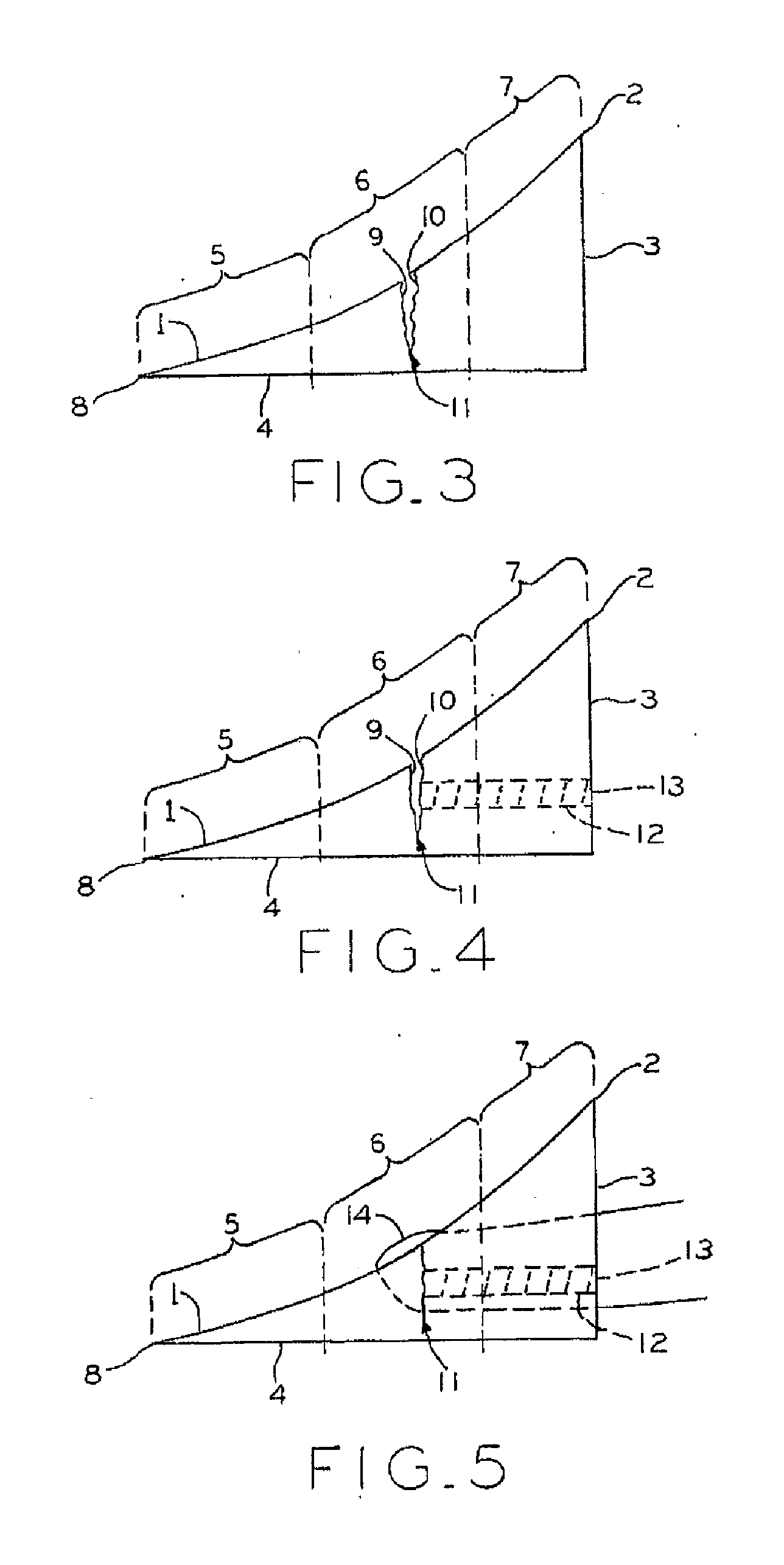Non-destructive tissue repair and regeneration
a tissue repair and non-destructive technology, applied in the field of surgical devices for repairing or regenerating body tissue, can solve the problems of meniscus tears and defects, avascular defects and defects that occur in the same structure, and the avascular (white/white) area typically do not heal, so as to facilitate the fixation of tissue, facilitate healing and/or regeneration, and facilitate the effect of avascular healing
- Summary
- Abstract
- Description
- Claims
- Application Information
AI Technical Summary
Benefits of technology
Problems solved by technology
Method used
Image
Examples
Embodiment Construction
[0056]FIG. 1 shows a view of a normal meniscus. The meniscus has a triangular cross section as shown in FIG. 2. The top of the articulating surface 1 interfaces with the femoral condyle and the bottom of the articulating surface 4 interfaces with the tibial plateau. The inner edge 8 and the outer rim 2 are indicated in the figure. The outer wall 3 defines the outermost boundary of the meniscus tissue.
[0057]FIG. 2 shows a cross sectional view of a normal meniscus showing approximate locations of the vascular (red) zone 7, avascular (white) zone 5, and partially vascular (red / white) zone 6 in an adult human.
[0058]FIG. 3 shows a cross sectional view of a meniscus with a vertical tear 11 in the red / white zone 6. The inner and outer tear faces, 9 and 10, are indicated in this figure.
[0059]FIG. 4 shows a cross sectional view of a meniscus with a vertical tear 11 in the red / white zone 6 with a stent 12 inserted at the outer tear face 10 through the vascular (red) zone 7. The tear 11 has...
PUM
 Login to View More
Login to View More Abstract
Description
Claims
Application Information
 Login to View More
Login to View More - R&D
- Intellectual Property
- Life Sciences
- Materials
- Tech Scout
- Unparalleled Data Quality
- Higher Quality Content
- 60% Fewer Hallucinations
Browse by: Latest US Patents, China's latest patents, Technical Efficacy Thesaurus, Application Domain, Technology Topic, Popular Technical Reports.
© 2025 PatSnap. All rights reserved.Legal|Privacy policy|Modern Slavery Act Transparency Statement|Sitemap|About US| Contact US: help@patsnap.com



